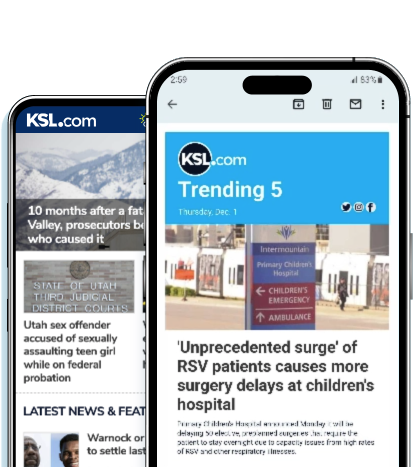Estimated read time: 3-4 minutes
- Most U.S. employees remain connected to work during vacations, fueling burnout.
- Burnout affects 66% of millennials, with top performers experiencing higher stress levels.
- Employees facing burnout are more likely to seek new jobs and feel undervalued.
SALT LAKE CITY — Even after extended vacations and holiday breaks, facing the reality of returning to work can be difficult, especially because many people never truly log off, according to a new study.
A recent Adobe Acrobat survey of 2,000 full-time employees in the United States and the United Kingdom shed light on international work-life balance:
- About 61% of U.S. employees check their work emails while on vacation, with nearly 40% responding. In the U.K., these figures were significantly lower, at 53% and 28%, respectively.
- Almost 90% of U.S. employees think about work during their time off.
- In the U.S. and the U.K., 40% of employees take social media breaks during the workday.
- 41% of U.S. workers choose to eat lunch at their desks to continue working compared to 31% of U.K. employees.
- U.S. employees work nearly 13 more hours than U.K. employees per month.
A press release by insurance company Aflac reported last year that as many as 3 in 5 Americans struggled with burnout, and younger generations are generally more affected. As many as 66% of millennials experience severe burnout, compared to a lower number for Gen X (55%) and baby boomers (39%).
Lexi Francis, a 24-year-old paid acquisition marketing specialist, said the stress of a heavy workload catalyzed by insufficient time is the most significant cause of her burnout. She said it has only heightened as she has climbed the corporate ladder.
"Having priorities and having management tell you that everything is a priority gets really stressful because all that burden gets put on the top performer's shoulders. Yet, the low performers don't get as much on their plate because management obviously knows that they won't do things as well," she said.
"So this is typically why top performers burn out more than the people who are lagging around and not doing anything because they're enjoying their lives, while the people who usually attach value to their work are struggling to get enough work done."
According to LinkedIn News , 41% of Americans feel stuck and exhausted by their job position, with some jobs experiencing higher rates of burnout.
Most burned-out careers:
- Program and project management — 50%
- Health care — 49%
- Community and social services — 48%
- Quality assurance — 47%
- Education — 45%
Employees experiencing burnout are almost three times more likely to actively seek a new job. They are also less likely to fully engage at work and may frequently neglect their job responsibilities, per data from the Society for Human Resource Management.
After acquiring new management at her previous job, Francis said her feelings of burnout increased when she realized there wasn't room for career or compensation growth, making her want to find a new job.
"If I feel like I can get a higher salary somewhere else and I'm not being fairly compensated, then it makes my burnout symptoms more severe because then I'm not being shown by my management that my value is worth it to them."
Even though she loves her new job, Francis said it's not always sustainable, especially in her personal life.
A survey by Emailtooltester found that 3 in 4 surveyors (73.6%) reach out to friends and family less because they are burned out from a day full of work communications.
"Outside of work, I stopped seeing friends, so I kind of become a recluse," Francis said. "I feel like I can't plan things with my friends. I feel like I can't see people, and I start working extra long hours, which takes away time for my passions. My passions fuel my desire to continue to work because my work pays for my passion."












